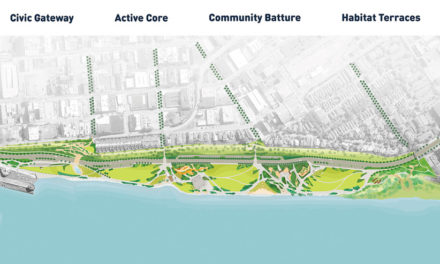More and more, we wonder how deep the hole can get before Memphis has no chance of getting out of it.
It was a question we asked again in light of recent updates of Memphis demographic information by the U.S. Census Bureau. It was yet another deafening wake-up call to deal with the deepening, intractable social problems that grip our city and the lack of leadership to tackle them aggressively and forcefully.
More to the point, it was also a reminder that it’s unrealistic to expect Memphis City Schools alone to produce the quality workforce and talent that are needed if our city is to become competitive for the jobs of the knowledge economy.
Symptomatic
Memphis City Schools Superintendent, using the theory of change model of his former boss, Miami school superintendent Rudy Crew, points to the tipping point that he’s seeking for the district, the point at which students and the system improve to create a competitive position in the global economy.
It’s an audacious goal, but it’s clear that there’s no question that it is a time for audacity and ambition. At the same time, it’s unrealistic to expect Memphis City Schools in about eight hours a day to reverse the realities that face most students in their other 16 hours.
For way too long, Memphis – as well as other cities – has spent billions on the symptoms of poverty, while doing little to address the causes or its pervasiveness. With the recent release of the census numbers, there should be little argument that Memphis needs an unprecedented, citywide counter offensive aimed at reducing poverty once and for all.
Making The Main Thing The Main Thing
No city has more incentive.
Memphis has more people living in poverty – about one in every four Memphians – than roughly the entire population of Chattanooga.
The poverty rate for Memphis has risen 27% since 2000 – from 20.6% to a staggering 26.2%.
From 2000 to 2006, the median household income of white Memphians increased 20.2% and, despite the professed importance of increasing black income and minority businesses by all economic development agencies, the median household income of African-Americans dropped 3%.
Warning Signs
Large sections of Memphis – including most of North Memphis, South Memphis, and Orange Mound – have median household incomes of less than $22,500 and some are less than $8,000. Many of these same areas have unemployment rates higher than 30%.
Despite a major summit, a two-year program launched by Tennessee Governor Phil Bredesen and Shelby County Mayor AC Wharton and more than a dozen initiatives, infant mortality in parts of Memphis remains essentially unchanged at levels more consistent with third world nations.
Forty percent of children in Memphis under the age of 18 years old live in poverty, a catastrophic 40% increase in six years.
Young Problems
More than 30% of students in 80% of all Memphis City Schools change schools each year, and in 11 schools, more than half the students move each year.
Each month, 80-100 children are left by their parents or guardians at Juvenile Court because they are uncontrollable.
Memphis is in the top five cities in the percentage of 16-19 year-olds that are neither working nor in school.
#1
About a year ago, St. Louis mapped out its competitiveness and quality in life by comparing the city to 35 other metros, including Memphis. The others are Seattle, Portland, San Francisco, Los Angeles, San Diego, Phoenix, Salt Lake City, Denver, Minneapolis, Milwaukee, Chicago, Indianapolis, Kansas City, Nashville, Oklahoma City, Dallas, Austin, Houston, San Antonio, Louisville, Cincinnati, Columbus, Detroit, Cleveland, Pittsburgh, Boston, New York, Philadelphia, Baltimore, Washington, Charlotte, Atlanta, and Miami.
Here are the categories where we finished #1:
• Families headed by single parents
• Families in poverty
• Smallest percentage of adults with advanced degrees
• Smallest number of firms (with employees) owned by African-Americans per 100,000 of African-Americans
• Smallest number of firms (with employees) owned by women per 100,000 of women
• Births to teen parents
• Persons with disabilities living in poverty
• Unwed parents
• Individuals living in poverty
• Children living in poverty
• Metro crime rate
Wanted: Change Agent
In other words, the past decade has been a punishing time for Memphis. New jobs growth went south, and how far we declined is shown graphically in the goal in Memphis Fast Forward to create 10,000 jobs a year, the number that we were doing regularly 15 years ago.
In other cities, it is often necessary to shake things up with a change in government structure, with new regional alliances and with economic growth strategies that leap frog them ahead of their rivals. But when it’s all stripped away, there’s absolutely no substitute for a courageous, creative leader in the mayor’s office who understands how their cities work and how to use their city’s distinctive, strategic levers for change to make maximum progress.
Here, the foundation for that kind of new vision and new leadership must be built on an honest, introspective civic conversation about the convergence of race and poverty in Memphis. As the first African-American metro with more than one million people, we have a strong self-interest in this issue, but we also are the most appropriate place in the U.S. to create new solutions to these very old problems.



